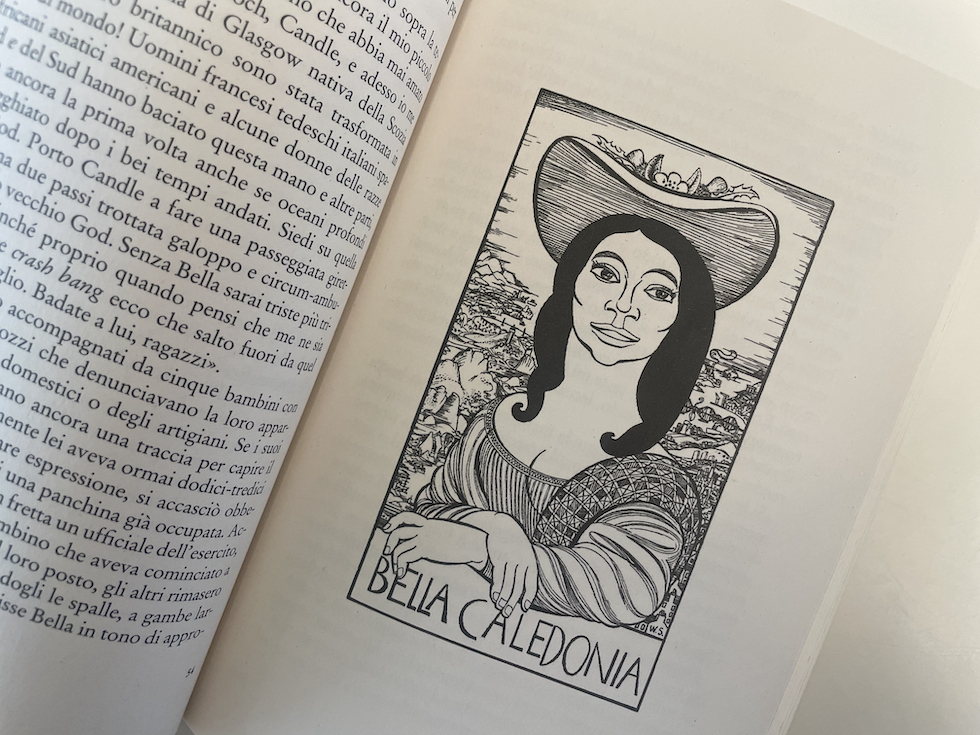Poor creatures!Recently released in cinemas, Yorgos Lanthimos' film is doing well with audiences after winning the Golden Lion at the recent Venice International Film Festival. This popularity also makes people talk about it Novel 1992 On which the film was based and whose author was the Scottish writer, illustrator and illustrator Alasdair Grey.
Gray died in 2019 at the age of 85, despite this It has been defined “The greatest Scottish writer since Walter Scott.” The author who To Glasgow he is “what Charles Dickens is to London or James Joyce to Dublin”, and he is not well known outside Scotland. For this reason, many of his fans are now happy that Lanthimos' film will make his books known to more people. But it also exists Who criticized One aspect of the film adaptation: Glasgow, where the book takes place, is not in the film. In fact, other things were also left out in the transfer process, and the ending was changed, so reading the novel is a slightly different experience.
Both versions of Poor creatures! It is set at the end of the nineteenth century and tells a remarkable story: that of Bella Baxter, a woman created by a scientist in a manner similar to Frankenstein's monster, that is, starting with a corpse. It is a story of female self-determination, and in fact the film is described as feminist, because being “born” into an already adult body allows the protagonist to not suffer the moral and chauvinistic restrictions that society of the time imposed on women. . This is why Bella Baxter has a free and uninhibited relationship with her own desires, sexual or otherwise, and is in no way subject to the will of the men around her, unlike her contemporaries. In both the film and the novel, her path to asserting character involves choosing to become a doctor.
But in the book, the character's story is not presented in a unique way as in the movie. Gray was a postmodernist writer, that is, he structured his books by playing with points of view and forms among other things, and he also inserted many of his own illustrations into the texts. In case Poor creatures! The bulk of the novel is presented in the form of a memoir by Scottish physician Archibald McCandless, which was found somewhat by chance in the 1970s and edited for publication by Alasdair Gray himself. The beginning refers to several nineteenth-century accounts that are presented to readers plausibly as found manuscript copies:
The doctor who wrote this chronicle of his youthful experiments died in 1911, and readers unaware of the bold experimental history of Scottish medicine may mistake the book for a grotesque novel. Those who examine the evidence presented at the end of this introduction will be in no doubt that in the last week of February 1881, at 18 Park Circus in Glasgow, an ingenious surgeon used human remains to create a twenty-five-year-old corpse. woman. Local historian Michael Donnelly disagrees with me. It was he who recovered the text which forms the greater part of this volume, so I am obliged to report how he found it. [Traduzione di Sara Caraffini.]
Lanthimos's film is based solely on this portion of the novel, although without McCandless (who also has a slightly different name, Max McCandless) as narrator. Instead, the book continues for about seventy pages, making Bella Baxter's story interpreted differently and allowing us to give a multifaceted reading of her feminism as well. In fact – we warn you that there are some details about the plot of the film below, but above all the book, which some may consider a spoiler – McCandless's version of the story is followed by a more concise version from his wife Victoria. McCandless.
Poor Creatures cover! Which book is currently in bookstores. There are actually two covers: the face of Emma Stone, Lanthimos's heroine, is printed on a removable dust jacket. Below is a cover containing Gray's original illustrations
In a letter addressed to her grandchildren, the woman, Bella Baxter herself, says that her husband's book is the fruit of her imagination, a collection of real facts mixed and distorted using pieces of novels such as Frankenstein By Mary Shelley. In the Victoria/Bella version there is nothing fantastic, no corpse coming back to life, and a more realistic explanation behind her path to liberation. In short, Victoria I escaped an abusive husband thanks to the help of Doctor Godwin Baxter, and thanks to him she was able to make a new life for herself, first with the alter ego Bella and then under her own name. She became Scotland's first female doctor and founder of a women's clinic where she helped those who wanted to end unwanted pregnancies.
The character seems to be basically saying that the first version of the story, the one in which she was a wonderful creature, is a man's attempt to belittle her experience and perhaps give credit to its creator. Gray then complicates matters, because in the introduction and in the endnotes that end the book, he declares that he is convinced that Victoria McCandless lied and that the real story is her husband's. But Gray himself is a man.
Fans of Gray's work who commented on the adaptation made by Lanthimos and Tony McNamara, the screenwriter, did not object to reducing the structure of the novel within the film, considering that trying to reproduce it in its entirety would have been complicated or perhaps not. very Influential. However, there has been some criticism, even on social media, for the choice to move the main setting of the story from Glasgow to London, despite it being a surreal London, and for not involving any Scottish actors.
This opinion is due to the importance that Glasgow and Scotland have in the work of Gray, who was a supporter of Scottish independence from the United Kingdom. passage LanarkThe novel, which is considered one of his masterpieces, says:
Then think about Florence, Paris, London and New York. No one arriving there for the first time is a foreigner, because he has already arrived there thanks to paintings, novels, history books and films. But if no artist uses a city, not even its inhabitants will experience it in the imaginative sense. What is Glasgow to most of us? A house, a workplace, a park with a football field or golf course, a few pubs and cross streets. That's it. No, I was wrong, there is also a cinema and a library. [Traduzione di Enrico Terrinoni]
Gray attempted to address the absence of Glasgow from the collective imagination through his books. in Poor creatures! Various places in the city are mentioned and shown through the illustrations, and the house where Bella Baxter lives corresponds Real address The same character was depicted as representing “Beautiful Caledonia”, a personification of Scotland (“Caledonia” was the Latin name for the region) similar to Britain's Britannia, France's Marianne, andFortified Italy.
In the novel, the fact that the body from which Bella Baxter is created is English seems to contradict this interpretation of the character as the embodiment of Scotland, But according to Joe Jacksonprofessor of twentieth-century and contemporary English literature at the University of Nottingham and an expert on Gray's works, is consistent in fact because the writer's nationalism was not based on the idea that the Scottish nation consisted of those who were born in Scotland or who had “Scottish blood”, but of He cooperates in his civil society.

Illustration in which Bella Baxter is identified as “Bella Caledonia”, in the Italian edition of Poor creatures!
Lanthimos He made it clear To get Scotland out of his country Poor creatures!, whose location was surreal, and therefore not really representative of any real city, since since he was Greek he would have had a “completely artificial” result. For his part, Andrew Grey, son of Alasdair, He said that in his opinion, the film production treated his father's book with respect (he was pleasantly surprised to discover that many of the actors had read the novel) and that his father did not impose any conditions on the director when he told him he had sold the rights to a film in 2012.
– Read also: Explaining what can be explained about Yorgos Lanthimos
However, there is something Scottish about the film, because Godwin Baxter, the scientist who created Bella, is said to be from Glasgow, and Willem Dafoe, the American actor who plays him, speaks with a Scottish accent. “I listened to some recordings of Gray himself.” He said, “And although I didn't want to imitate his accent, I liked the way he spoke and his wicked sense of humor. “I think he put a lot of himself into the character of Baxter.”
In Italy Poor creatures! It was first published by Marcos y Marcos Publishing in 1994 under the title Poor things!later changed to The life and secrets of the first female doctor in England. However, it is now in bookstores in the Safarà edition, a small publisher from Pordenone that began to make itself known in 2015 by publishing Gray's books: it is in their catalog too LanarkNovels 1982 Janine And Warrior songAnd a collection of short stories on one's last legs.
– Read also: Italic books of Safra

“Lifelong beer expert. General travel enthusiast. Social media buff. Zombie maven. Communicator.”











Leave a Reply